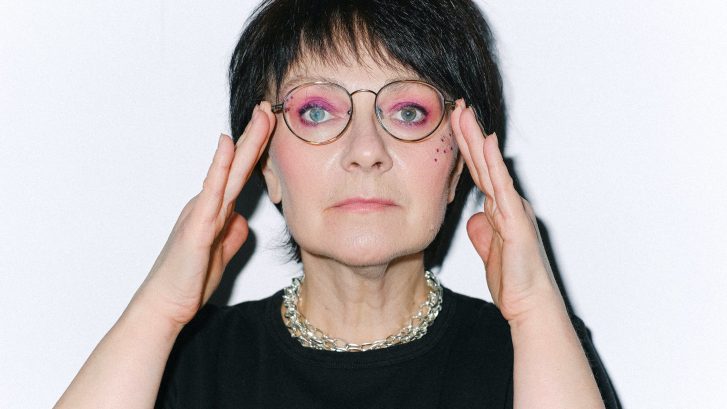Debunking Common Facelift Myths
We live in an era of rampant communication, but unfortunately, that leads to the spread of misinformation at an alarming rate. Everyone has an opinion, and they all have access to social media, so we are privy to an onslaught of rumors and unsubstantiated claims every single minute of every single day.
The scourge of unverified data tends to shape perception. You may be convinced, for example, that facelifts are procedures designed for a certain type of person. Your thoughts of a typical facelift may conjure up images of “overdone” results, but the truth is the myths could not be further from the truth.
We are offering some of the biggest misconceptions about facelifts and countering fiction with facts. Get ready to see facial enhancement in a whole new light.
Myth: Facelifts Are for Older People
When you think of the term “facelift,” you may envision your great grandmother undergoing the procedure, but reality tells a much different story.
Fact: It’s Never Too Early to Look Your Best
The key to a successful aesthetic enhancement is making it appear seamless. It would be jarring for anyone to appear as an 84 year old one day and then become a 20-something overnight. No respectable plastic surgeon would ignore the essence of a patient’s signature image. Instead, your doctor must celebrate your facial features and strive to recapture that youthful vigor. Face and neck lifts must be tailored to a client’s unique bone structure. By gently removing redundant folds, your surgeon is accentuating the vital vivacity of your appearance.
The average age for facelift recipients has steadily decreased over the past decade. The procedure used to be popular among people in their 50s or older, but now it is common for many individuals in their mid-40s to seek a surgical boost. In fact, over the span of 15 years, the popularity of facelifts for clients in their 30s has increased by approximately 50%.
Myth: Facelifts Look Unnatural
The thought of “lifting” the skin creates the implication that the brow is pulled too high or the cheeks are propped up to an uncomfortable elevation. If that is your idea of a facelift, then please get a second opinion.
Fact: Facial Contouring Is a Subtle Art Form
The medical term for facelift is rhytidectomy. The Greek word rhytis means wrinkle, so a rhytidectomy is a surgical approach to removing wrinkles subtly and comprehensively. A proper facelift addresses more issues than just the skin. Aging affects soft tissue and fat deposits unevenly. Some people experience unwanted protrusions under their eyes, while others show cratering and depressions in their appearance over time.
Obviously, these two scenarios must be addressed in very different ways. Modern facelift techniques gently remove delicate reservoirs of tissue from the lower eyelids and chin without changing the essence of how the face is structured. Once these precise alterations are accomplished, your surgeon can contour the skin to eradicate redundant folds.
As the skin is re-draped to fit the newly sculpted scaffolding of your face, all incisions are concealed, either along the hairline or behind the ears. Nobody needs to know that you’ve had a facelift except you.
Myth: Facelifts Are Only for Women
While women do account for a majority of facelift patients, men are well represented among the ranks of rhytidectomy recipients.
Fact: Men Can Also Benefit from Facial Contouring
According to the American Society of Plastic Surgeons, 10% of all facelifts in the United States were performed on men in 2019. This figure represents a 5% increase from the year before.
There is nothing intrinsically “masculine” or “feminine” about facial contouring. The procedure is designed to accentuate your natural features by removing excess tissue that can obscure your natural good looks. Men who look in the mirror and wish to recapture the vigor and alertness of their younger years can greatly benefit from a facelift from an experienced professional.
Myth: Facelifts Require a Long Recovery Time
The stereotypical version of a facelift patient is akin to The Mummy from those old black and white films. But fear not, you won’t require a bulbous amount of meshed bandages and gauze to recuperate from a modern day rhytidectomy procedure.
Fact: Recovery Is Just Around The Corner
The average recovery time for a facelift procedure is approximately one week. Results may vary, but advanced medical technology has allowed doctors to enhance the face without disrupting its functionality unlike the outdated surgical procedures that were performed in the past.
Tumescent liposuction, for example, bathes unwanted fat cells with a mix of lidocaine and other soothing fluids. The tumescent liquid safely and gently loosens fat deposits for easy extraction. This is merely one component of Dr. William Binder’s approach to facelift enhancement.
By selectively altering and supporting existing subdermal structures, Dr. Binder allows the face to lift itself. His vertical midface adjusts soft tissue upward without pulling it back which avoids that “windstorm” look that so many people associate with bad plastic surgery. The careful, focused reshaping of the exact areas that need attention leads to brilliantly bespoke improvement, while also lending itself to decreased downtime when compared to an excessively aggressive facelift approach.
Dr. Binder can tailor your facelift procedure to the unique issues that bother you. His neck lift technique provides the strong, sleek lines that you crave to give your face its optimal pedestal. Younger patients with mild to moderate ptosis (sagging) of the jowls may benefit most from Dr. Binder’s short scar method of enhancement. Regardless of your contours, you can explore the best way to help them shine here at our Beverly Hills clinic.
Contact us at your earliest convenience to separate the myths about facelifts from the facts about facial enhancement done right.

